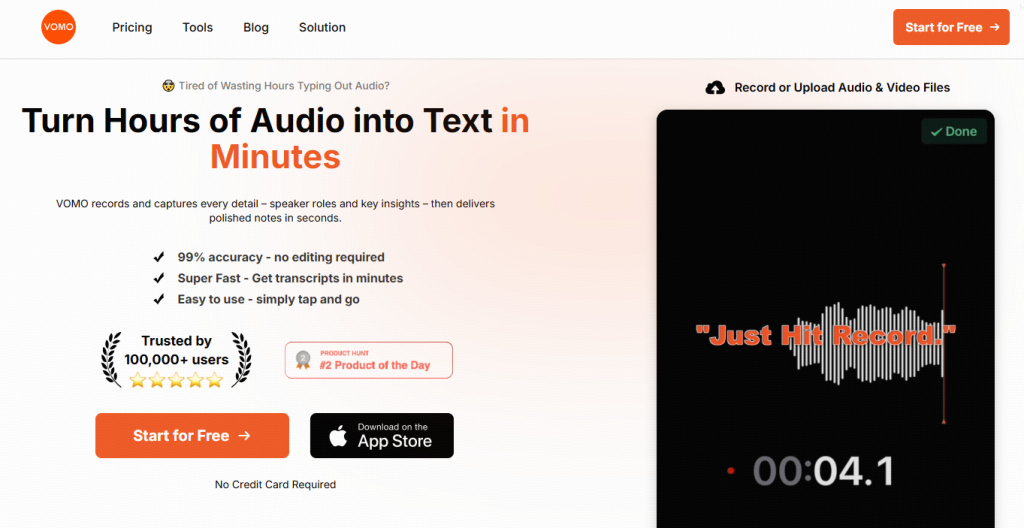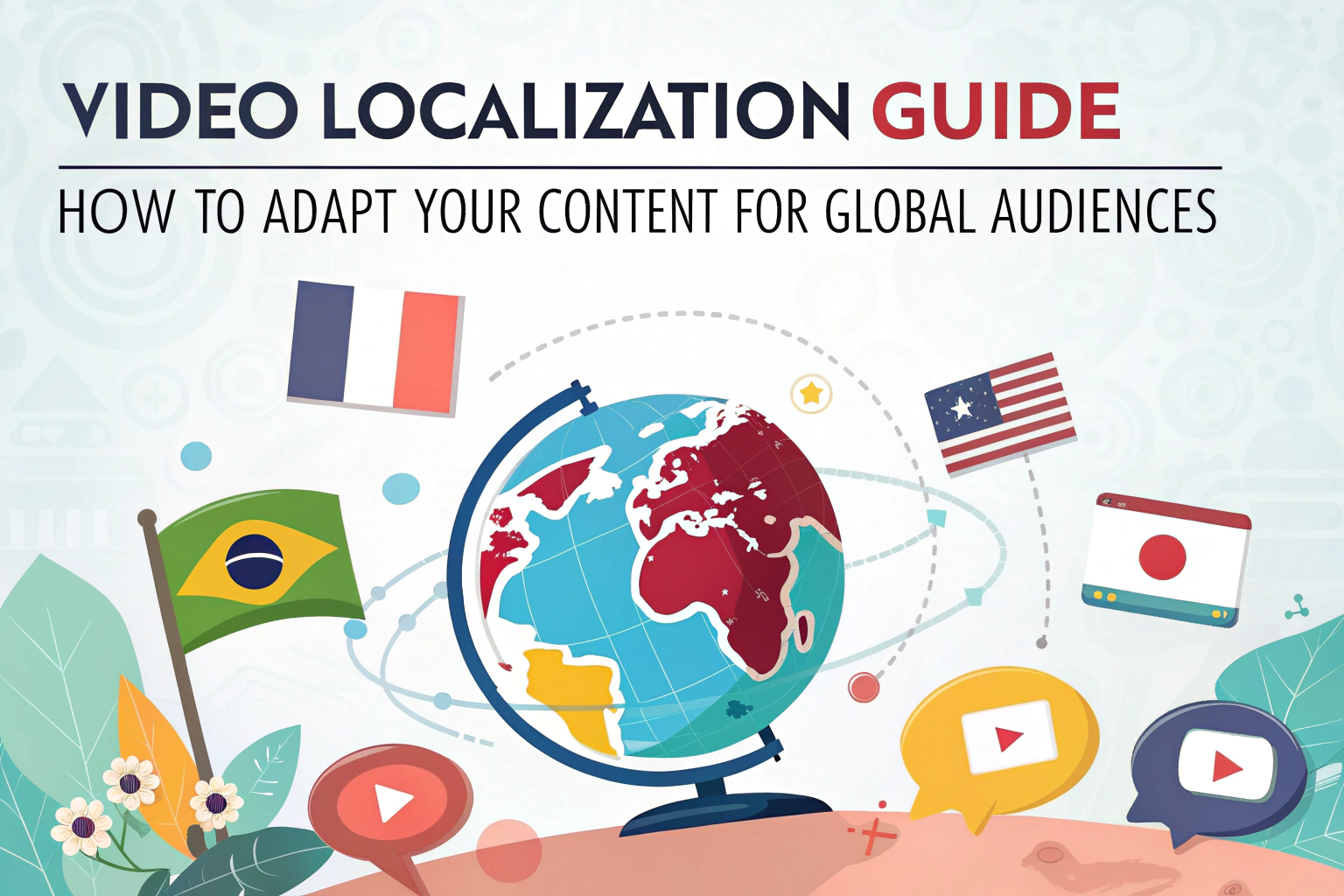With videos accounting for 82% of total internet traffic in 2022, it’s clear that audiences prefer video over other content types. To reach global audiences effectively, content creators and businesses must go beyond simple translation and adopt a comprehensive video localization strategy. Video localization ensures your content is linguistically and culturally tailored to resonate with viewers across the globe.
By following this guide, you’ll learn practical strategies for video localization, including leveraging VOMO AI to transcribe, translate, and adapt videos for international audiences.

What is Video Localization?
Video localization is the process of adapting video content from one language to another while maintaining cultural, linguistic, and contextual relevance. Beyond translating dialogue, it includes adjusting on-screen text, visuals, audio, and even humor or cultural references. A localized video ensures your message feels native to the target audience, increasing engagement, retention, and brand credibility.
Why Localize Your Videos?
Video localization is critical for global expansion. Here’s why:
- Increase global reach: While English is spoken by 20% of the world’s population, there are billions of potential viewers in untapped markets. Localized videos help break language barriers and expand your audience.
- Build brand credibility: Translating content to match cultural preferences demonstrates a commitment to local audiences, establishing your brand as trustworthy and approachable.
- Improve visibility and engagement: Search engines and video platforms like Google and YouTube favor content optimized for local languages. Localization improves discoverability and increases audience interaction.
Methods of Video Localization
There are multiple approaches to localizing videos, depending on budget, target audience, and content type.
1. Add Translated Subtitles
Adding subtitles in the target language is cost-effective and preserves the original audio. Subtitles are especially useful on social media, where videos often autoplay muted. However, viewers must split attention between reading and watching, and subtitles alone may not convey cultural nuances.
2. Dub Your Video
Dubbing replaces the original audio with new audio in the target language, often using professional voice actors. Dubbing is ideal for films, advertisements, and promotional videos because it provides a seamless experience. With VOMO AI, dubbing is faster and more affordable—AI-generated voiceovers can mimic natural speech patterns and intonation in multiple languages.
3. Replace the Voiceover
Voiceovers retain the original audio faintly in the background while adding narration in the target language. This works well for documentaries, travel content, and product explainer videos where context matters. The downside is that emotion and tone may not fully match the original.
4. Adapt On-Screen Elements
Text, graphics, stickers, and other on-screen elements must be localized. With VOMO, you can extract text from videos using vídeo a texto conversion, identify elements that need adaptation, and translate them to ensure cultural and visual relevance.
Step-by-Step Video Localization Strategy
A systematic approach ensures your localized content is effective and engaging.
Step 1: Understand Your Target Audience
Research your target market to determine cultural preferences, language nuances, and local trends. For example, viewers in the US, UK, China, and India often prefer subtitles, while French, Italian, and German audiences favor dubbed content. Russian, Polish, and Ukrainian viewers lean toward voiceovers.
Step 2: Select the Right Localization Method
Choose a method based on audience preference, budget, and content type. Combining methods—such as dubbing with subtitles—can enhance engagement. VOMO AI supports all these methods, allowing you to generate transcripts and translations in 57 languages, making multi-method localization simple and scalable.
Step 3: Translate and Adapt Scripts
Accurate translation is critical. Start with AI-assisted translation to save time, then have native speakers review for cultural relevance, idiomatic expressions, and tone. For example, American English humor may need slight adjustments for British audiences. VOMO can convert de audio a texto, providing precise transcripts for translation and adaptation.
Step 4: Test Cultural Relevance
Ensure localized content respects taboos, humor, traditions, and cultural references. Pilot videos with native speakers or focus groups to detect potential missteps and refine the final product.
Step 5: Optimize for Distribution
Publish localized videos on platforms favored by your target audience. Optimize titles, descriptions, metadata, and tags in the target language. Ensure mobile-friendliness and promote videos through localized advertising campaigns for maximum reach.
How AI Enhances Video Localization
AI tools are transforming video localization by automating complex tasks:
- Text-to-Speech (TTS): Turn transcripts into natural-sounding audio without hiring voice actors.
- AI Dubbing: Generate dubbed videos in multiple languages, maintaining speaker intonation and style.
- Transcription and Translation: Convert audio or video to text, then translate into 57 languages with VOMO AI.
- Market Insights: Analyze search trends, social media behavior, and viewer engagement to refine localization strategy.
By leveraging AI, you can localize videos faster, reduce costs, and maintain high-quality output.
Case Study: Global Social Media Campaign
A tech company localized their product explainer videos for 10 countries using VOMO AI. The AI-generated transcripts were translated and adapted to local languages, while voiceovers and subtitles were added based on regional preferences. Within three months, global engagement increased by 65%, and conversion rates improved in non-English speaking markets by 40%.
Conclusion: Expand Your Reach with VOMO AI
Video localization unlocks global opportunities. By translating scripts, adapting visuals, and leveraging AI tools like VOMO convertir de audio a texto y vídeo a texto, you can create content that resonates worldwide. Start localizing your videos today and connect with audiences across 57 languages effortlessly.



